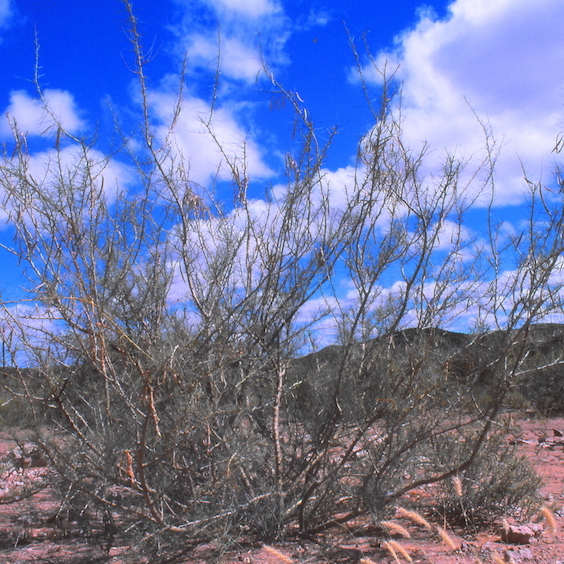Luise HoffmannTHE greenhair tree is easy to identify by its long green threadlike leaves. It occurs from the Kunene River all along the escarpment and from about the Erongo southwards it is found all over the country up to the Orange River.
However, it is totally absent from the entire northeastern half of Namibia.
Names: A. lemoenhout, thaboom, waterboom, wildelemoen, wildegroenhaarboom; D. Langnadelstrauch; E. greenhair tree; H. omuyumbamenye; (N/D) /khab. The genus name Parkinsonia was given to the tree in memory of the English physician and botanist John Parkinson (1567 – 1650), who wrote a wellknown book about gardens describing more than 1 000 plant species and illustrating more than 800.
The Afrikaans names lemoendoring or lemoen­hout meaning lemonthorn or lemonwood perhaps refer to the spiny branches.
Usually the green hair tree is a slender shrub or small tree of 3 – 4 metres height but may reach 8 metres.
It is sparsely branched from low down and the branches are bent in an angular pattern.
Because leaves in the normal sense of the word are absent it seems rather transparent.
It is often found in groups, especially in the vicinity of Karibib, where it seems to be almost invasive.
The pale brown trunk is fairly smooth while the bark on the branches is yellow green. The branches are armed with stout, straight spines of the same colour, which are modified lateral shoots.
Spines in general consist of the same tissue as the branch on which they grow and do not break off easily.
The compound leaves mainly consist of the dark green rachis only, thus resembling green hairs – hence the common name.
They grow in bunches from the angle between the spines and the branch and may measure 4 – 15 cm.
Leaflets are tiny, widely spaced and mostly absent – a modification to reduce evaporation in their arid habitat, while photosynthesis is carried on in the green, hairlike midribs.
The pretty, bright yellow flowers are arranged in lose, hanging sprays and may reach a diameter of 15 mm.
They usually appear after it has rained and develop into narrow reddish brown, straight pods, somewhat flattened between the seeds and sometimes spirally twisted.
They are about 13 cm long and 6 9 mm wide, becoming straw coloured with age.
In the absence of other food the long ‘hairs’ are browsed by game and stock, while the roasted seeds can serve as a coffee substitute.
The Damara boil the young shoots to use as a cough remedy. In days gone by pipes were cut from the wood which does not crack when heated.
The exotic Jerusalem thorn or Mexican greenhair tree (Parkinsonia aculeata) found in gardens hails from tropical America and is regarded as invasive because it potentially outperforms our indigenous vegetation.
The main difference between the two species is in the ‘hairs’, the midribs, which are only 4 – 15 cm long in the local species but 20 – 40 cm in the exotic one, which is also more densely branched and flowers more profusely.
Stay informed with The Namibian – your source for credible journalism. Get in-depth reporting and opinions for
only N$85 a month. Invest in journalism, invest in democracy –
Subscribe Now!






